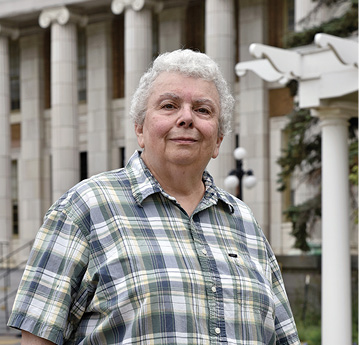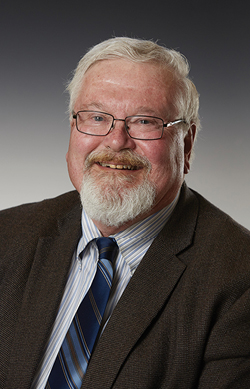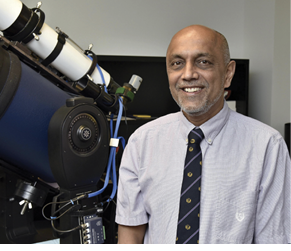John Weeks cupped his hands into a nest as he recalled the moment as a young child when he saw four bright blue robin eggs and learned that baby birds were growing inside.
 At 90, he traced a lifetime of loving, teaching and preserving nature back to that defining moment on his brother’s Albion, N.Y., farm.
At 90, he traced a lifetime of loving, teaching and preserving nature back to that defining moment on his brother’s Albion, N.Y., farm.
Among his most prized accomplishments is the development of about 80 nature centers in New York State, including SUNY Oswego’s Rice Creek Field Station.
“Back when I started, no one cared much about the environment,” said Weeks, who worked as a biologist for the state conservation department before serving as a biology professor at SUNY Oswego from 1957 to 1966. “I got in on the ground floor of what became a growing industry. Today, there are a lot of nature centers, and I was fortunate to have done a lot of the initial work.”
In addition to Rice Creek, Weeks led the development at the Beaver Lake and Sterling centers, was the founding director of the Rogers Environmental Education Center in Sherburne, N.Y., and was director of the Centers for Nature Education at Baltimore Woods in Marcellus, N.Y.
He helped with the site plans at these centers, and perhaps, more importantly, he worked on programming that tied into the curriculum for a variety of learning levels.
Weeks, who advocated for SUNY Oswego to develop a field station, eventually convinced his fellow natural science faculty members and college administration to rally behind the idea. He worked with professors Leland Marsh and Donald Cox to develop curriculum for the future teachers who attended Oswego at that time.
“That was our first goal—to help teachers teach science better,” Weeks said.
He took a sabbatical to oversee the development of the Rice Creek property, including the construction of a 26-acre pond. Although he said he loved teaching, an opportunity to transform the former Harry Rogers game farm into a nature center was too good to pass up.
He said what pleases him most is to see the lasting impact of his and his colleagues’ work, specifically having environmental science and preservation lessons worked into school curriculum and the state requirement for businesses to conduct environmental impact studies before building on a site.
“What was considered fuzzy-headed idealism back then is now considered necessity,” Weeks said.
Today, he enjoys painting, and his works are on display at Rice Creek, Baltimore Woods and various locations across Central New York. His work has been made into note cards and even reproduced on a tie.
He and his wife, Esther, also spend time with their children, Denise Bush ’71, Gary ’72, Brenda ’78, Donald ’95 M’97 and Joni, and their grandchildren.
Listeners of the Oswego-based WRVO station recognize Weeks for his weekly segment, The Nature of Things, which ran from 1982 through 2006, and are occasionally re-broadcast today.
Or the hundreds of children and adults he has led on nature walks and field trips might know him for his iconic feathered hat.
“Because I’m so short, I put tall pheasant feathers on my hat and told people to ‘Follow the feathers,’” he said. “Now, it’s kind of become my trademark.”
And also his life’s work.
—Margaret Spillett
You might also like
More from Faculty
Physics Professor Shashi Kanbur Earns SUNY Distinguished Professor Rank
Physics Professor Shashi Kanbur Earns SUNY Distinguished Professor Rank A record of astronomical research accomplishments and providing stellar opportunities for students …
Faculty Member Publishes Breakthrough Research on Bird Migration
Faculty Member Publishes Breakthrough Research on Bird Migration Daniel Baldassarre, a SUNY Oswego biological science faculty member, recently published research that …
Student-Faculty Team Publishes Study on Invasive Species
Student-Faculty Team Publishes Study on Invasive Species The work of four SUNY Oswego student researchers and a faculty member tracking and …












